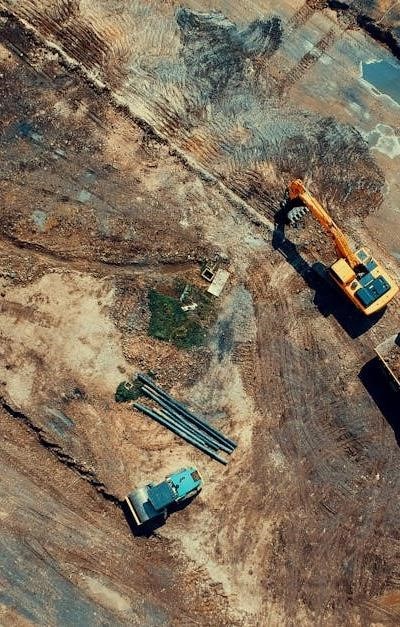
Executive Summary: Strategic Waste Management for Dumps Shop Operations
Strategic waste management is paramount for Dumps Shop, directly impacting operational costs, environmental impact, and compliance. This document outlines a comprehensive plan for waste reduction, enhanced recycling, and improved resource management.
Key initiatives focus on process improvement, data analysis for waste stream optimization, and maximizing material recovery. Achieving a higher diversion rate from landfill through sorting and compaction efficiency is central.
The strategy emphasizes adherence to environmental regulations, exploration of circular economy principles, and the potential for upcycling/repurposing. Effective logistics and hauling are crucial, alongside robust waste tracking and reporting.
The Imperative of Modern Waste Management
Contemporary waste management transcends mere disposal; it represents a critical component of sustainability and responsible resource management. For Dumps Shop, escalating landfill costs, increasingly stringent environmental regulations, and growing public concern regarding environmental impact necessitate a proactive and sophisticated approach.
Traditional refuse handling – characterized by simple collection and hauling to landfill – is demonstrably unsustainable. The sheer volume of municipal solid waste, commercial waste, and potentially industrial waste generated demands a shift towards waste reduction at the source, rigorous sorting for recycling, and exploration of circular economy models.
Failure to optimize waste stream management exposes Dumps Shop to significant financial risks – increased operational costs associated with disposal fees – and reputational damage stemming from non-compliance. A robust strategy, prioritizing efficiency and material recovery, is therefore not merely advisable, but essential for long-term viability.
Comprehensive Waste Stream Analysis & Categorization
Detailed waste stream analysis is crucial, categorizing municipal, commercial, industrial, and hazardous refuse. Accurate waste audit data informs recycling.
Detailed Characterization of Waste Inputs
Comprehensive characterization of waste inputs necessitates a multi-faceted approach. Initial assessment involves quantifying the volume and weight of municipal solid waste, commercial garbage, and industrial refuse received. Subsequent analysis focuses on compositional studies, identifying the percentage breakdown of materials – including paper, plastics, metals, glass, organic matter, and construction & demolition debris.
Crucially, a rigorous protocol for identifying and segregating hazardous waste is implemented, adhering strictly to environmental regulations. Detailed records are maintained regarding the source of each waste stream, enabling targeted waste reduction strategies. Contamination levels within recycling streams are meticulously monitored to maintain material recovery efficiency. This granular data informs process improvement initiatives and supports accurate reporting for compliance purposes.
Optimizing Core Operational Processes
Enhancing efficiency in sorting, compaction, and hauling is critical. Lean management principles will streamline process flow and maximize throughput.
Optimization techniques will minimize operational costs and improve waste volume reduction. Strategic logistics and inventory management are key.
Enhancing Efficiency in Sorting, Compaction, and Hauling
Sorting efficiency will be significantly improved through enhanced shop floor control and standardized waste stream categorization protocols. Investment in advanced sorting technologies, coupled with rigorous employee training on contamination identification, is paramount. This minimizes refuse quality issues and maximizes material recovery rates.
Compaction processes will undergo detailed process improvement analysis, focusing on optimizing machine settings for various waste types – municipal solid waste, commercial waste, and industrial waste. Regular monitoring of compaction density and cycle times will ensure peak performance and maximize volume reduction.
Hauling logistics will be restructured to minimize transportation distances and fuel consumption. Route optimization techniques, utilizing data analysis of waste generation patterns, will be implemented. Furthermore, exploring alternative hauling methods and negotiating favorable contracts with transfer stations will contribute to substantial cost reduction. A robust waste tracking system will provide real-time visibility into waste disposal logistics.
Towards a Circular Economy & Zero Waste Goals
Leveraging Technology and Data-Driven Insights
Implementing a comprehensive waste tracking and reporting system is crucial. Data analysis will inform process improvement, optimization techniques, and cost reduction.



This document presents a commendably thorough and pragmatic framework for waste management at Dumps Shop. The emphasis on data-driven optimization of waste streams, coupled with a clear articulation of the financial and reputational risks associated with inadequate practices, is particularly insightful. The integration of circular economy principles and the acknowledgement of evolving regulatory landscapes demonstrate a forward-thinking approach. The proposed strategy’s success will, however, be contingent upon diligent implementation and continuous monitoring of key performance indicators. Overall, a well-structured and strategically sound assessment.